
 |
|
#1
|
|||
|
|||
|
This is a followup to a thread I started recently where I bought a Taylor GS Mini with a destroyed top off the forum, and I am beginning the restoration of it. The previous owner had fallen on top of it on an icy driveway, and the top was crushed, and the X braces were both cracked. The following are photos from the start to where I am now with removing the top, removing the neck, and bridge, and am preparing to replace the top:
Before I started: [IMG] 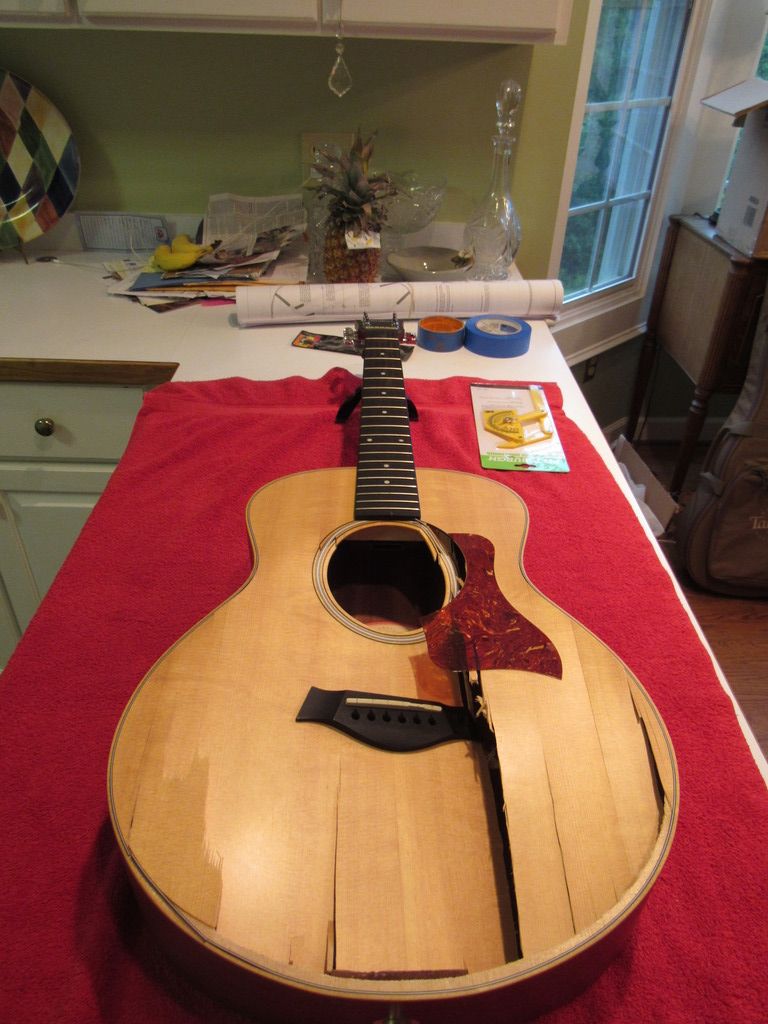 [/IMG] [/IMG][IMG] 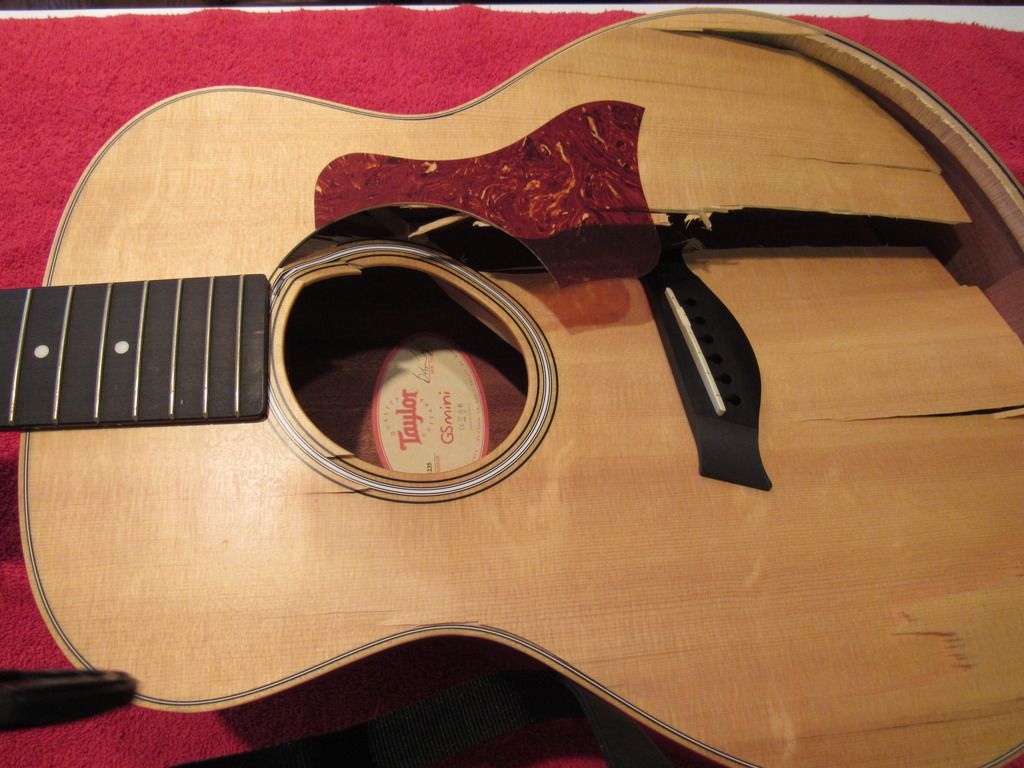 [/IMG] [/IMG]After the first few pieces were removed: [IMG] 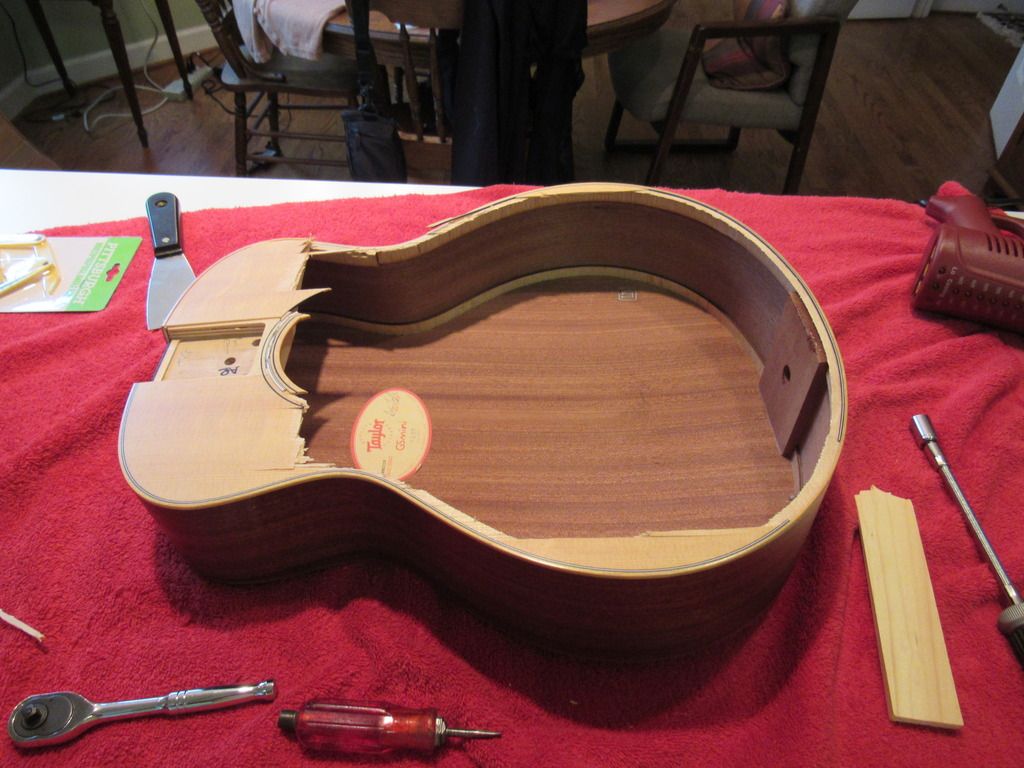 [/IMG] [/IMG]The pickup, and all braces have been removed: [IMG] 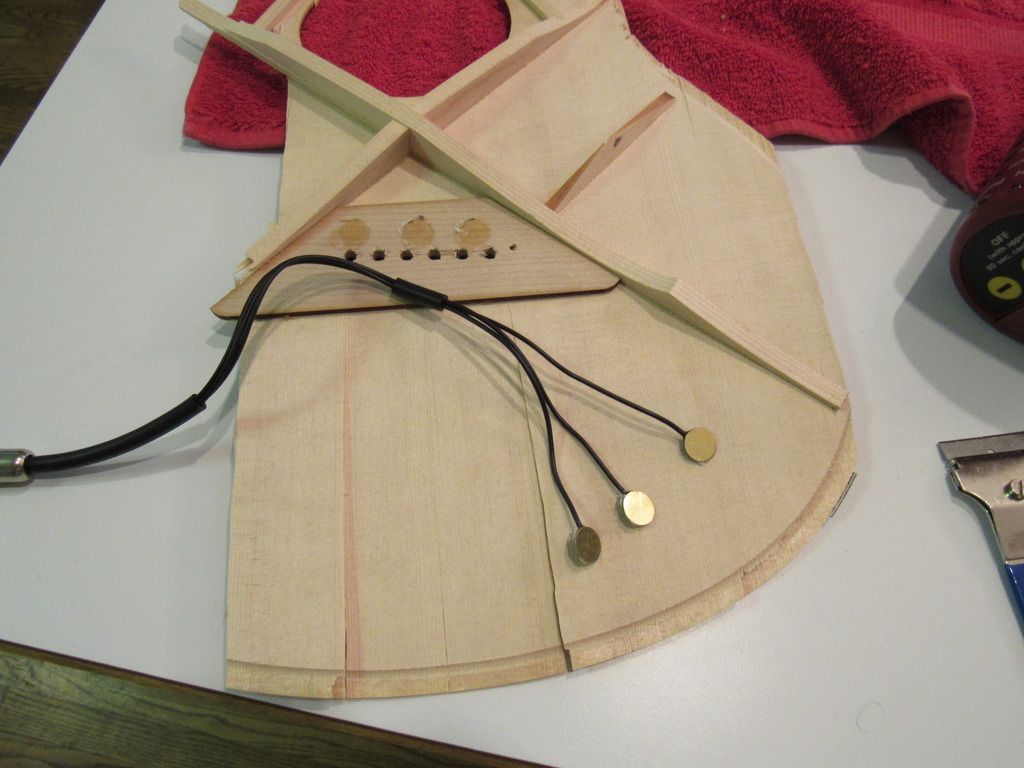 [/IMG] [/IMG]I used a heat gun to remove the remaining pieces of the top, and now I am ready to replace it: [IMG] 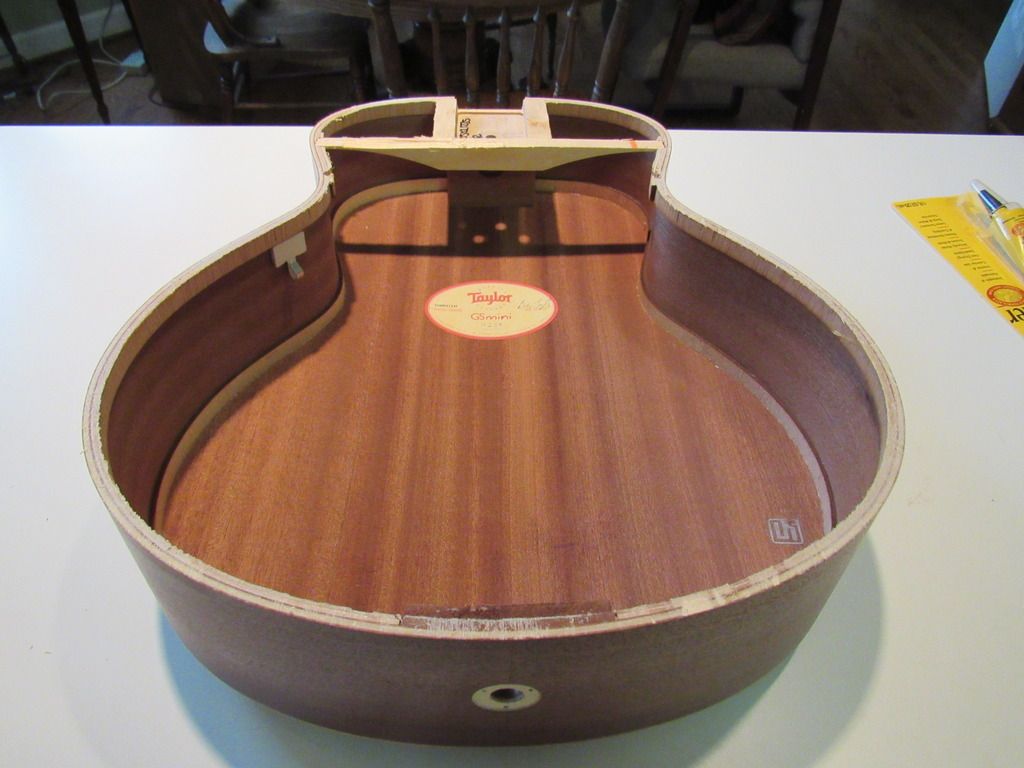 [/IMG] [/IMG]I have ordered a torrefied Sitka Spruce top, brace material, a herringbone Rosette, and b/w/b purfling. I have a friend who is on build #6 for himself who has all of the tools I will need to complete the job. It appeared that the top was 2.9mm thick, and I am wondering if that is what I should thickness the top for the new one, or go a little thinner? I would like any opinion on this. Clifford
__________________
Recording King RD-318 Bedell TBAC-28-SB Jeff "Skunk" Baxter |
|
#2
|
|||
|
|||
|
I would generally assume that Taylor knows what they are doing in terms of top thickness, so stay there. However, if you feel the need to tweak something you could make new braces that are rounded over. The original braces in photo #4 are scalloped in shape, but square in profile. You can maintain most of the strength while lowering the mass by using a rounded profile. I'm sure that Taylor didn't do anything fancy with brace shaving to keep the costs down on this guitar.
Cool project BTW. |
|
#3
|
|||
|
|||
|
When you get your top, measure the stiffness (Young's modulus) and compare that with the average for spruce (~10.0MPa). If it's higher than the average, you can go a little thinner on the top.
__________________
Rodger Knox, PE 1917 Martin 0-28 1956 Gibson J-50 et al |
|
#4
|
|||
|
|||
|
My guess is that you can certainly go thinner then that. That's almost 1/8th inch thick.
|
|
#5
|
|||
|
|||
|
I agree. Also, that top had a relief route around the edge giving it more movement, a thinner top will have the same GENERAL effect.
__________________
Tim B |
|
#6
|
|||
|
|||
|
Thanks for all of the advice. I am in the waiting mode for the supplies to arrive from StewMac.
Is the Taylor relief rout just what looks like around 1/2 inch of thinning on the edge of the top? Does anyone know how deep the routing is? Clifford
__________________
Recording King RD-318 Bedell TBAC-28-SB Jeff "Skunk" Baxter |
|
#7
|
|||
|
|||
|
I went over to my friend's house who luckily is a guitar builder, and has all the equipment I will need to complete this GS Mini top replacement. We started by planing the center edges, and glued and joined the torrified Sitka spruce I ordered from Stewmac. Here is the photo in the joiner he bought from LMII:
[IMG]  [/IMG] [/IMG]After the flue dried we traced the top onto the joined top, and cut it out with a bandsaw: 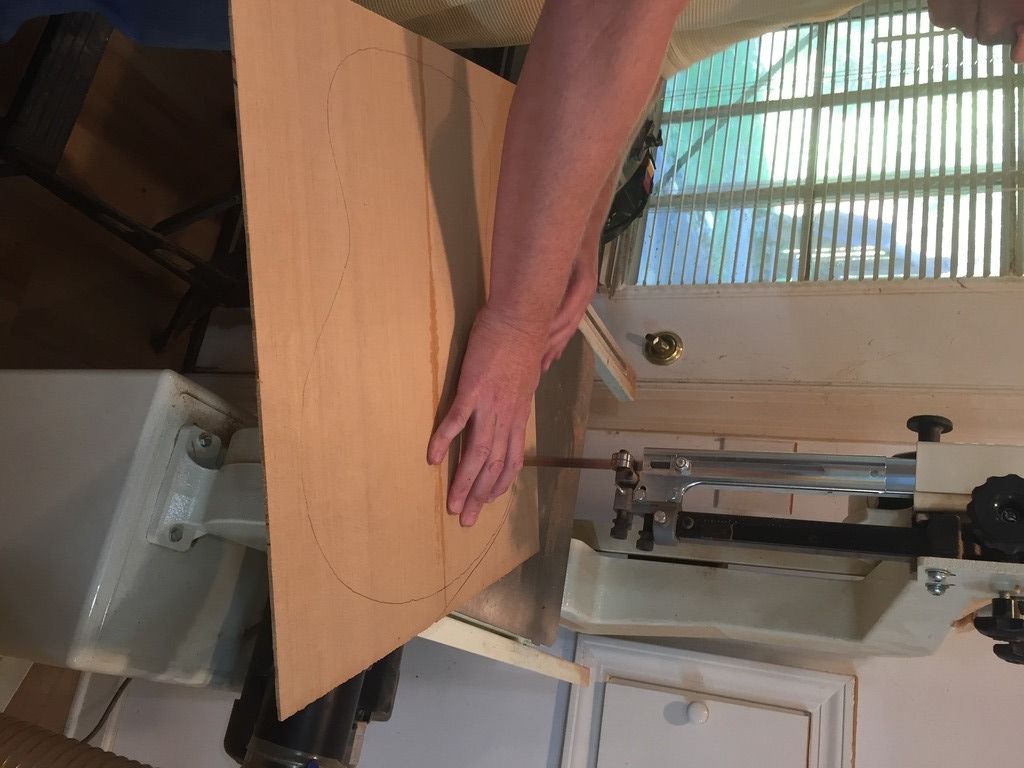 [IMG] 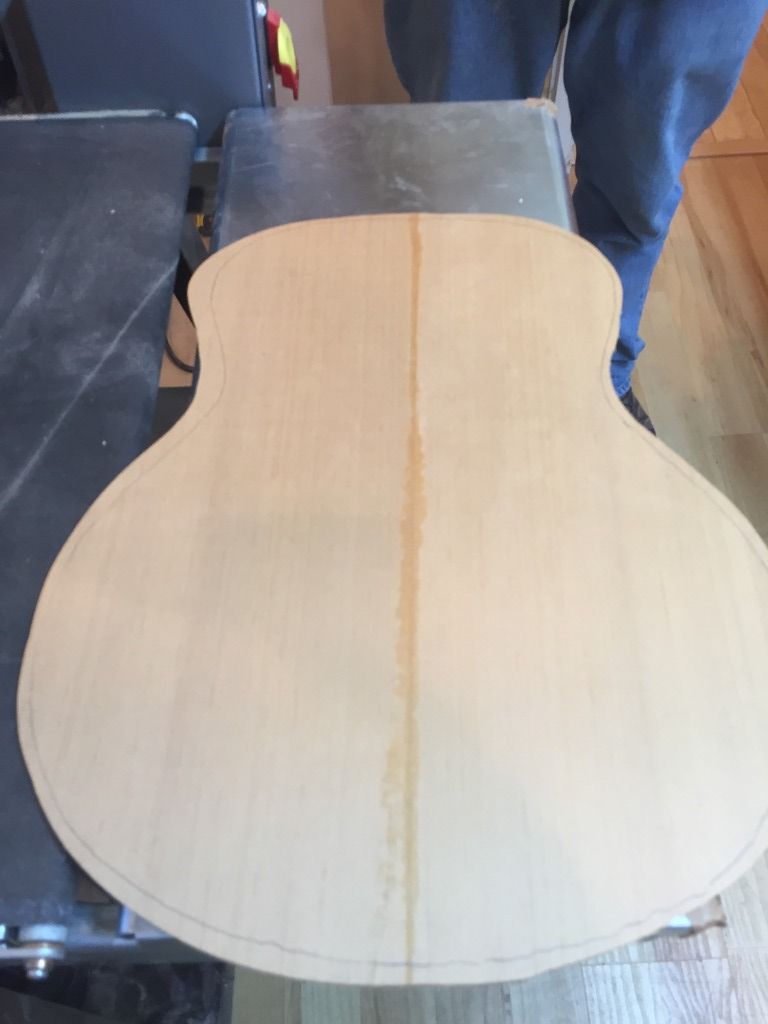 [/IMG] [/IMG]Here is the top after thicknessing the top down to about 2.9 mm: [IMG]  [/IMG] [/IMG][IMG] 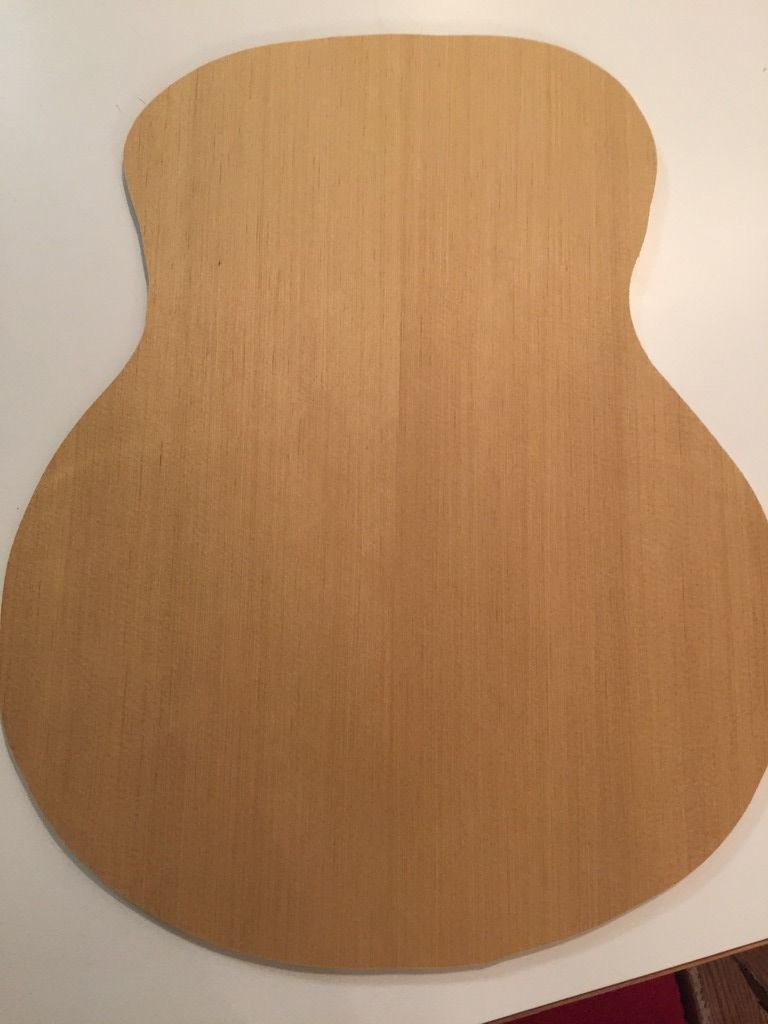 [/IMG] [/IMG]The top has a very nice color to it, and the wood has a pleasing smell to it. Next week we will cut the soundhole, and locate the bridge. It is very pleasing to be beginning to bring this GS Mini back. Clifford
__________________
Recording King RD-318 Bedell TBAC-28-SB Jeff "Skunk" Baxter |
|
#8
|
|||
|
|||
|
Its a good start.
The LMI joiner is a nice unit, I have one and like it a lot. IMO, you should have thinned the top after joining it, not after cutting the shape out. Every wood is different, we only use meaurements for example like 2.9mm when assembly lining a prodcut. Given the opportunity to hand build something, things like checking the tension of the top as you thickness it, can improve the sound greatly. Steve
__________________
Cole Clark Fat Lady Gretsch Electromatic Martin CEO7 Maton Messiah Taylor 814CE |
|
#9
|
|||
|
|||
|
Thanks for the advice, Steve. I may go thinner than 2.9mm on the top. I was following my friends advice on thicknessing top after we cut it out. What would be the advantage in thicknessing the top then cutting out the top? Is it because it is sturdier before cut? I am trying to pick up as much info as I can.
Clifford
__________________
Recording King RD-318 Bedell TBAC-28-SB Jeff "Skunk" Baxter |
|
#10
|
|||
|
|||
|
When a board is joined, conventionally we loosen the top with a sander / plane / scraper or thicknesser, to create a top which is loose and responsive. Its checked via a process of flicking the top between your fingers and getting a whooshing sound (oil canning is another descriptive).
I am very surprised your friend who builds guitars has not shown you this step. Once its shaped, this becomes a lot more difficult of a process to try and do. These steps are what make hand made guitars sound great rather than good, it is the process of working with that specific wood and getting the most out of it. Steve
__________________
Cole Clark Fat Lady Gretsch Electromatic Martin CEO7 Maton Messiah Taylor 814CE |
|
#11
|
|||
|
|||
|
I do it the same as the way mirwa describes. In fact I do the deflection testing on the full sheet as well. But I think if you pick a method, take good notes, and continue with it consistently you will gain experience and be able to find out what works for you. If that's the way this builder does it then he probably has been doing it long enough to know what works. That's the interesting thing about building guitars and really what makes them so unique.
I only recently started doing deflection testing and when I was gathering information on how to do it I found some who liked to cut the sound boards and others who didn't. Since I like to use the audible - wobble - sheet metal technique then I figured deflection on the rectangle sheet made more sense. Just pick a method and be consistent. |
|
#12
|
|||
|
|||
|
I'll check a top both rectangular and shaped. Unless you build more than a few guitars a year I don't see the benefit of keeping soundboard rectangular when thickness-sanding, as the rectangular plate will be relatively looser in relation to its size, as opposed to already cut to shape. And that plate will behave differently once the rosette is installed and the soundhole cut, the braces are installed, and the top is glued onto the rim. Even finish-sanding will affect the stiffness. Many builders will sand sections of the top after installation to the rim, to loosen said sections and allow them to move freer.
If there's a couple reasons I can think, maybe if the thickness sander produces some snipe at the ends of the board, or tapers the board at the edges, you may want to leave a little extra wood to remove after thickness sanding. Also the torrefied top may be a bit more brittle than a regular top, so cutting the profile before thickness sanding may remove chip-out or edge fraying that might occur in the band-sawing process. |
|
#13
|
|||
|
|||
|
Can anyone here tell me if the GS Mini has a radiused top? I am preparing the braces, and I need to be sure. It appears to be flat. Thanks.
Clifford
__________________
Recording King RD-318 Bedell TBAC-28-SB Jeff "Skunk" Baxter |
|
#14
|
|||
|
|||
|
So I have a similar project on. Guitar arrived with the top removed so I canít check what the original was like. If I put a straight edge across the sides it looks very flat
Does anyone know what the radius is? I have a 25ft dish. |
|
#15
|
|||
|
|||
|
About top bracing radius - - - call Taylor and ask.
Bridge location: to be determined after top is in place (installed permanently). Precision matters. Neck angle: before doing ANYTHING involving neck angle, get the instrument to a Taylor-approved technician to mate the neck to the body. Taylors are unlike any other factory-made instrument and what someone does to set the neck angle on a Taylor is unlike what's done to any other instrument in the industry. No neck heel trimming, no saddle shaving. The shim sets drive everything. |